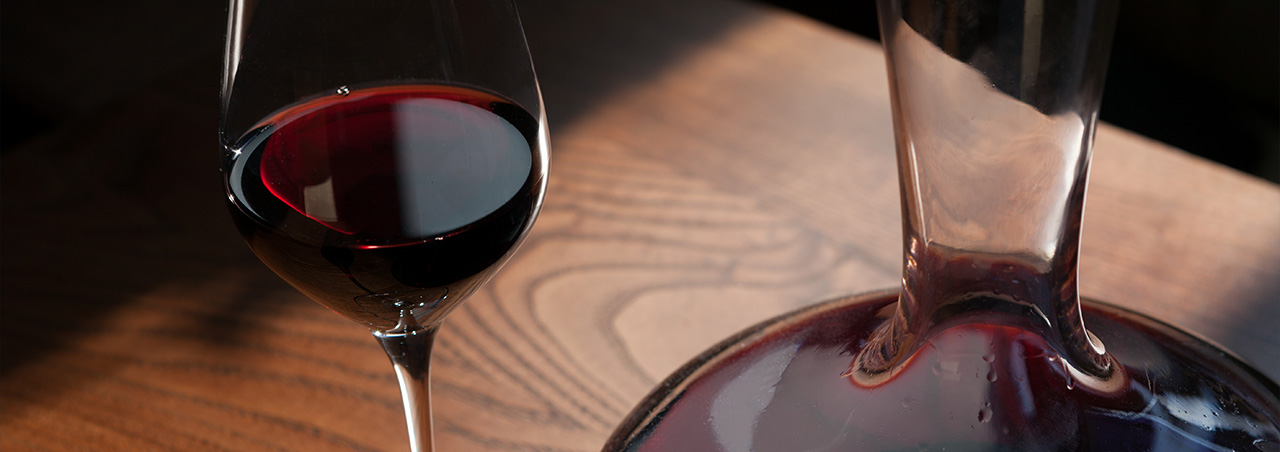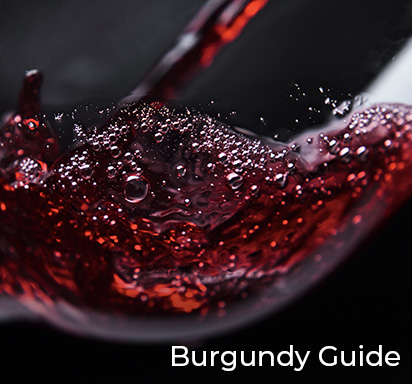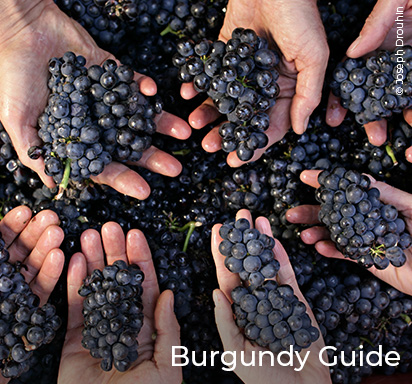A guide to the difference between a wine carafe and a decanter

Uncorking and relishing a wine is a pleasurable moment indeed. Serving your fine wine in a decanter will enable it to express its aromatic potential. In this guide, learn more about the differences between decanters and carafes.
What is the difference between a wine carafe and a decanter?
An aerated wine is a wonderful experience for any wine lover; winegrowers, connoisseurs and amateurs alike. And serving wine in a decanter or a carafe, rather than in the bottle itself, can affect and elevate the tasting experience. But knowing which to use is no easy task. Discover the different uses and purposes of a decanter and a carafe below.
What is a wine carafe?
Carafes are objects that tend to look more decorative, like vases and have a more slender body and a small base. These decorative and elegant vessels can truly elevate a room and add a special touch to your interior decor. Carafes can be made out of various materials, such as glass, metal, or porcelain.
Commonly used to serve water in France, these glass containers often contain liquor, juice or other beverages. Due to the fact that carafes are designed to contain large volumes of liquid, carafes have a specific shape.
The wines that can be served in a carafe are white and rose wines as they do not need to open up like red wines do. Serving wine in a carafe will not necessarily alter or enhance the flavors of the liquid inside. As carafes are generally used on a daily basis, they do not come with a stopper, making it easier to pour the liquid.
What is a decanter?
Decanters can come in many shapes, sizes and designs. Decanters tend to look a lot like vases and usually have a flat base and a long, slender neck. Unlike carafes which can hold any beverage or liquid, decanters are specially designed to house wine. Fine hand-blown decanters can be unearthed in the quaintest places and truly are works of art, they will be the centerpiece of your dining table.
The art of decanting a wine
Decanting wine is a process that is used to enhance a wine's features. The designs of decanters are endless, yet traditional decanters tend to be made out of glass or crystal, have a wide bottom, a narrow neck and come with a stopper that enables you to choose whether you wish to add air or not.
A few guidelines: How and when to decant a wine
Decanters are mostly used for red wines because the tannins act as a barrier against oxidation. However, decanting a white wine may impact the wine's freshness and aromatic characteristics. Some full-bodied white wines can benefit from decanting, especially oak-matured whites such as white Bordeaux and Chardonnay wines. But any clean glass vessel will do.
Sediment in the wine
Some red wines have sediment at the bottom of the bottle and thus, decanting a wine is a practical way to separate the wine from that deposit. The trick is to leave the bottle of wine in an upright position for 24 to 48 hours and then decant the wine into a clean decanter, preferably close to a strong light source or candle so that you can see if any of the deposit slips into the decanter while pouring. When decanting wine that contains sediment, candles and smartphone lights can be used to see when the sediment reaches the neck of the bottle.
Choosing the right decanter for the right wine
Small decanters, that have a large wine-to-air ratio (70/30 or 80/20), are used for light-bodied red wines with the Pinot Noir and Beaujolais varietals and some rose wines. A decanter with a 50/50 ratio of wine to air is best suited for medium-bodied red wines with varietals such as Merlot, Sangiovese and Grenache. Full-bodied red wines with Cabernet Sauvignon or Tempranillo should be decanted in large, wide-based decanters with a small wine-to-oxygen ratio due to their firm tannic structures.
Depending on the wine’s characteristics (age, variety & appellation), it should be aerated before serving. Wines that are full-bodied usually take the longest due to their powerful tannins and can be decanted anywhere from 15 minutes to 2 hours before serving.
Serving a decanted wine
Once a wine is decanted, it cannot be undone. Most wines can remain in a decanter for up to half a day, if they remain in the vessel for a longer period of time, the wine will over-oxidize. Over oxidation is the chemical process that turns wine into vinegar. Decanting enables a wine to improve its taste, but exposing too much air can have an adverse effect on the liquid. We recommend drinking a decanted wine never more than two hours after being decanted. A safe rule of thumb is that the more tannic and youthful a wine is, the longer it will need to decant.
How to clean your glassware
Due to their shape, it can be difficult to clean the inside of a decanter. Washing them by hand is without a doubt the best practice, simply by placing them in some warm soapy water. Decanters are delicate, so placing them in the dishwasher may damage them or leave them with milky or water marks. Once the decanter is clean, it is best to either dry them with microfiber towels which will enable you to bring back the dazzling sparkle of your decanter. Or, to dry them naturally and in an upside-down position.
You may like
Discover the Rhône Valley, a haven for wine lovers! Explore its storied terroirs, iconic appellations, and diverse grape varieties like Syrah, Grenache, and Viognier. Unveil wines to savor and cherish!
1/21/2025In this Guide, discover Austria’s top wine regions, grape varieties like Grüner Veltliner and Riesling, and some exquisite food pairings. Find out more on Austrian wines and why you should add them to your cellar.
1/14/2025Explore the Loire Valley, one of France’s most famous wine regions. Learn about its renowned appellations and grape varieties like Sauvignon Blanc, Chenin Blanc, and Cabernet Franc.
1/9/2025Discover the taste of Burgundy wine with flavors from Pinot Noir and Chardonnay. Explore the influence of terroir, the difference between Village, Premier Cru, and Grand Cru wines, and ideal pairings.
10/16/2024Burgundy, France, is famed for its exceptional wines, primarily crafted from Pinot Noir and Chardonnay. Explore the region’s diverse wine types, from Grand Cru to regional varieties, and discover its unique terroir.
10/14/2024Explore our top 8 wine gift ideas for any occasion! From iconic Champagnes to age-worthy reds, these selections are sure to impress. Perfect for birthdays, holidays, or just because, with delivery right to their doorstep.
9/24/2024
















